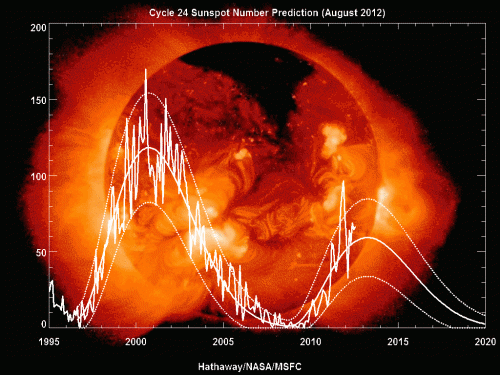Solar flares increase in appearances, intensity

(�鶹��Ժ) -- Increased numbers of solar flares have become common at the moment, as the sun’s normal 11-year activity cycle is ramping up.
In July, the sun emitted its strongest solar flare of the summer, causing vivid aurora borealis, or northern lights, in parts of southern Canada and northern United States. Also in July, the sun emitted a medium-intensity flare believed to be the reason for India’s worst power outage in history.
According to James R. Webb, astronomy professor in the Department of �鶹��Ժics, solar flares are a pretty common occurrence, typically occurring in cycles. The current cycle is expected to peak in 2013.
“A magnetic disturbance in the sun sends a stream of high-energy charged particles off into space at high velocities,” Webb said. “Only a small portion of these particles actually hits Earth, most go off into space away from Earth.”
But, can solar flares really cause serious damage here on Earth?
“Sometimes the flare is so strong, that it totally fills the Earth’s radiation belts and the particles can enter the atmosphere at much lower latitudes and even hit Earth itself,” Webb said. “In these cases, the worse that happens is some electrical circuits get short-circuited and go offline.”
Of the particles that do interact with Earth, most are trapped in the Earth’s radiation belts and actually make their way to the polar latitudes (Canada, Siberia, Alaska) in the northern hemisphere and enter the atmosphere causing northern lights, Webb said. The particles going south enter the atmosphere in Antarctica causing southern lights.
“If the latest outbursts are pointed toward Earth, we might see some of the effects, but they are not devastating and will certainly happen again in the future,” Webb said.
Provided by Florida International University




















